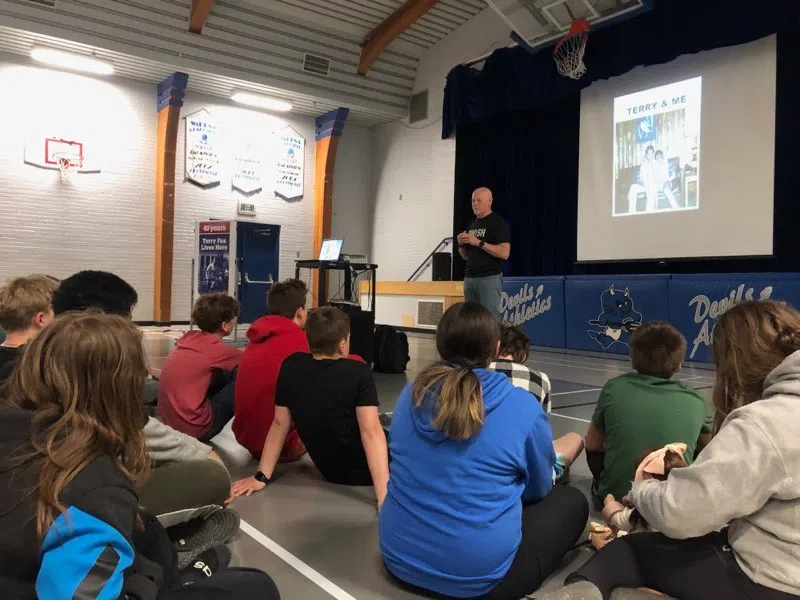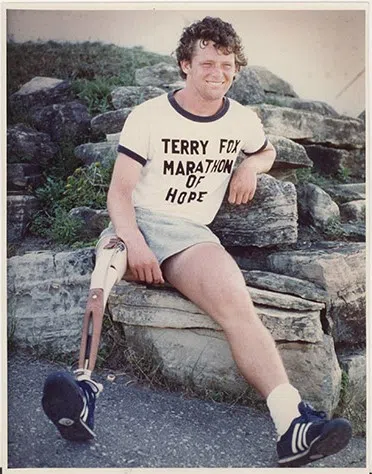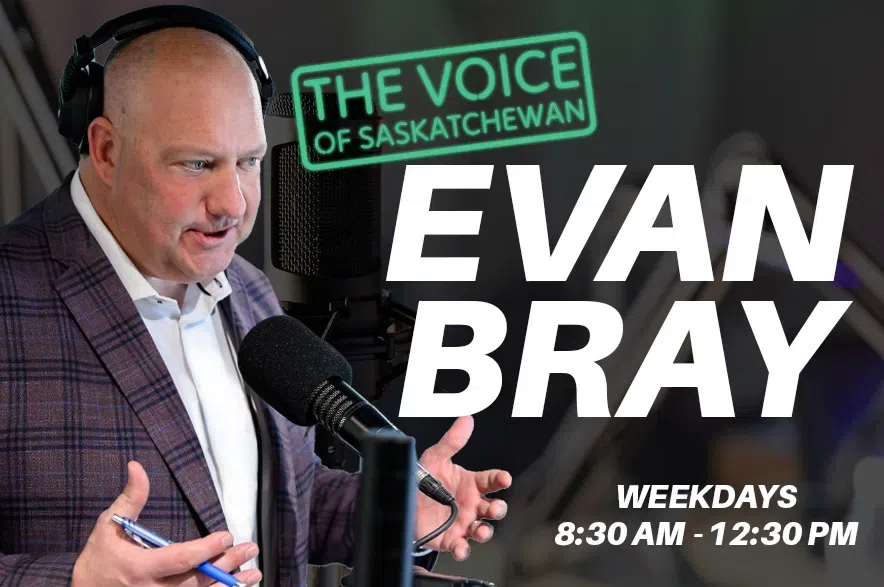It’s been over four decades since Terry Fox started his Marathon of Hope run in St. John’s, Newfoundland, for cancer research and awareness.
Canadians and people around the world continue to be inspired by his story.
Read More:
- Meet the 11-year-old girl raising thousands for breast cancer research
- Two new cancer drugs approved for use in Sask., offering more treatment options
- Institute unveils ‘Team Canada of cancer research’ in city where Fox began run
Fred Fox, Terry’s older brother, continues to keep his brother’s legacy alive. He is travelling across Canada, sharing his brother’s story with children, senior citizens, community members and organization volunteers. He recently stopped in Saskatchewan.
While on the road, FOX joined The Evan Bray Show to discuss his brother’s ongoing legacy and how you can get involved.
Listen to the full interview here:
The following transcript has been edited for length and clarity.
EVAN BRAY: We welcome you to Saskatchewan! I know you’re going around to the schools. In fact, you’re in Humboldt today, correct?
FRED FOX: Yeah, I’m in Humboldt today visiting the schools. I started my week in Prince Albert. On Sunday night, I visited a seniors’ home there that does its own form of a Terry Fox walk. They call it the silver fox event. Then I made my way to Foam Lake, then I’ve been in Wynyard. I left Yorkton this morning. So it’s been an amazing week, visiting schools and any community volunteers as well.

Fred Fox stopped in Wadena, SK, and spoke with children and teachers about Terry’s story. (Carissa Robb/submitted)
The Terry Fox Run is something that’s near and dear to so many of our hearts. Do you feel Terry’s presence still as strong as ever?
FOX: I really do. This year, we’re celebrating the 45th anniversary of when Terry started.
So it’s amazing that the schools are continuing to do it. I think there are close to 10,000 schools, 500-600 communities across this country, and it’s continually getting bigger and bigger. It’s amazing when I go to schools and you see the new generations of students who are inspired by Terry, who love Terry, and are doing their part and continuing his dream and legacy.
What do you remember about that time when Terry was starting that journey? Can you take us back and walk us through your memories of that?
FOX: Yeah, it was a bit of a whirlwind. I remember like yesterday when Terry and his good buddy Doug Alward left Vancouver, and we were all at the airport, and nobody really knew what to expect when he arrived in Newfoundland.
As Terry and Doug made their way through Newfoundland and got closer to Ontario, the momentum was building. I had an opportunity to be with Terry in Toronto, and that was kind of where everything just came together. All of Canada at that point was supporting what Terry was doing. There were 10,000 people at City Hall. From the time that Terry started, to unfortunately the time when he had to stop in Thunder Bay on September 1, four and a half months later, things were happening so fast.

Fred Fox stopped in Yorkton and shared his brother’s message and how people can get involved all year round. (Carissa Robb/submitted)
I can’t believe the impact the walk still has, and not to diminish other cross-Canada treks and fundraisers, but nothing has ever come close to living up to what we saw Terry accomplish in his Marathon of Hope.
FOX: No, I mean, obviously Terry was running with an artificial leg; in fact, it was designed for walking, not for running. Back in the late 70s, in 1980, there was no such thing as running artificial limbs, and Terry was running a marathon every single day.
I think on top of that, people saw who Terry was, the integrity, the honesty, the selflessness that he had. He wasn’t running to become a Canadian hero. He wanted to truly make a difference and impact cancer research in this country, and that’s what’s happened through the money that’s been raised through the Terry Fox runs that happen every year. Terry’s had a true impact on cancer research and the lives of so many people.
Technology has changed so much. That prosthetic leg that Terry had was made for walking, not running. Today’s technology has come a long way; to me, that makes his feet that much more incredible.
FOX: Yeah, in my presentations here in Saskatchewan, we’ve had one of our staff members from the office in Regina, and they brought a replica leg, or a similar leg to what Terry wore, and to share with the staff and the students.
I always say, if you ever get a chance, the next time the Paralympic Games are on, make a note of the running athletes and what they’re wearing today. It’s just incredible. The technology, the lightweight carbon fibre material that is used and the blades at the bottom. Terry didn’t have that kind of technology, and he was just, every day, you know, working so hard to even take a step as he was running.
What do you think Terry would think today if he saw all the money raised for cancer research?
FOX: I think after last year’s Terry Fox Run, we’re closer to $950 million now.
Terry would be so proud. When he was first diagnosed with cancer, in 1977 at 18, he was so impacted by what he was seeing on cancer wards and it changed his life. He did some research and found out that not a lot of money in Canada was being directed towards research, not a lot of government money, or private donations, so he wanted to change that.
The fundraising that happens today, Terry would be proud of how it’s it’s impacted the lives of so many.

Fred Fox takes a photo with Wadena teachers on his Saskatchewan visit, sharing Terry’s story. A replica of Terry’s prosthetic can be seen in the middle. (Carissa Robb/submitted)
The Terry Fox Foundation is still so strong. How has it evolved? How have you seen it change over the last 40-45 years?
FOX: In a lot of ways! Today, a lot of it is digital. People can go online and create their own fundraising pages. COVID had played a big part in that. So it’s come a long way, and more people are involved.
We have different events we do as well. We have the Mount Terry Fox track. There’s a ride in celebration of the 45th anniversary, like a cycling event going from Vancouver to St. John, starting on June 9.
What’s the best way for people to support the Terry Fox Foundation?
FOX: I think our website is amazing, with so much information and the resources there. So Terry Fox.org is the best place to go.
Whether you’re in a community or town and there isn’t a Terry Fox Run there, you can find out how to organize one, or where the closest one to you is to participate. If a school isn’t involved, there are all kinds of resources there to find out how they can get involved.
We’ve got a new line of Terry Fox merchandise for the Terry Fox Run this year, because of the 45th anniversary. People can go there and buy a t-shirt, a hoodie or a hat.












